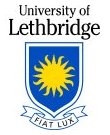Math 1410, Spring 2020
Matrix Transformations, Part 2
| Sean Fitzpatrick |
|---|
| University of Lethbridge |
 |
Recap
Warm-Up
Assume \(T\) is a linear transformation.
Given \(T\left(\bbm 1\\0\ebm\right) = \bbm 3\\-2\ebm\) and \(T\left(\bbm 0\\1\ebm\right) = \bbm -4\\5\ebm\text{,}\) find \(T\left(\bbm 2\\3\ebm\right)\)
Given \(T(\vec{a})=\bbm 1\\0\\-3\ebm\text{,}\) \(T(\vec{b})=\bbm 0\\-2\\5\ebm\) and \(T(\vec{c})=\bbm 1\\1\\1\ebm\text{,}\) find \(T(2\vec{a}-3\vec{b}+5\vec{c})\text{.}\)
Reminder: \(T\) is linear if \(T(\vec{x}+\vec{y})=T(\vec{x})+T(\vec{y})\) and \(T(k\vec{x})=kT(\vec{x})\) for any vectors \(\vec{x}, \vec{y}\) and scalar \(k\text{.}\)
Is it linear?
For each map \(T:\R^2\to\R^2\text{,}\) decide if it's linear:
\(T\left(\bbm x\\y\ebm\right) = \bbm 2x-3y\\x+4y\ebm\)
\(T\left(\bbm x\\y\ebm\right) = \bbm 4xy\\2x+y\ebm\)
\(T\left(\bbm x\\y\ebm\right) = \bbm 2x+1\\x-3y+2\ebm\)
Examples
If \(T(\vec{x})=A\vec{x}\) for \(A = \bbm 2\amp -3\\-1\amp -2\\5\amp 4\ebm\text{,}\) what are the domain and codomain of \(T\text{?}\)
For \(T\) as above, compute \(T(\hat{\imath})\) and \(T(\hat{\jmath})\)
What if \(A = \bbm 2\amp -1\amp 5\\4\amp -2\amp 3\ebm\text{?}\)
If \(T\left(\bbm x\\y\\z\ebm\right) = \bbm 3x-2y\\-x+4y+5z\\7x-2y-6z\ebm\text{,}\) for what matrix is \(T(\vec{x})=A\vec{x}\text{?}\)
More examples
Determine the matrix of \(T:\R^3\to \R^2\text{,}\) given that
\begin{equation*} T(\hat{\imath}) = \bbm 2\\-1\ebm, T(\hat{\jmath}) = \bbm -3\\5\ebm, T(\hat{k}) = \bbm -7\\6\ebm\text{.} \end{equation*}Determine the matrix of \(T:\R^2\to \R^2\text{,}\) given that
\begin{equation*} T\left(\bbm 2\\-1\ebm\right)=\bbm 3\\4\ebm, T\left(\bbm -1\\1\ebm\right) = \bbm -1\\2\ebm\text{.} \end{equation*}
Transformations of the plane
Maps from \(\R^2\) to \(\R^2\)
When \(A\) is \(2\times 2\) we can visualize everything in terms of geometric vectors in the plane.
We can use matrices to describe transformations, like stretches, rotations, and reflections.
(But not translations.)
Example:
Describe the effect of the transformation with matrix \(A = \bbm 2\amp -1\\1\amp 3\ebm\) in terms of what it does to the unit square (\(0\leq x,y\leq 1\))
Transformation matrices
Stretches: \(\bbm k\amp 0\\0\amp 1\ebm, \bbm 1\amp 0\\0\amp k\ebm, \bbm k\amp 0\\0\amp k\ebm = kI_2\text{.}\) (This is just scalar multiplication.)
Reflections: \(\bbm -1\amp 0\\0\amp 1\ebm, \bbm 1\amp 0\\0\amp -1\ebm, \bbm -1\amp 0\\0\amp -1\ebm, \bbm 0\amp 1\\1\amp 0\ebm\)
Rotations: \(\bbm \cos(\theta)\amp -\sin(\theta)\\ \sin(\theta)\amp \cos(\theta)\ebm\)
Shears: \(\bbm 1\amp k\\0\amp 1\ebm, \bbm 1\amp 0\\k\amp 1\ebm\)
Examples
Determine the matrix transformation that:
Stretches horizontally by a factor of 2, rotates by \(90^\circ\text{,}\) and then reflects across the \(x\) axis.
Reflects across the line \(y=x\text{,}\) stretches vertically be a factor of 3, then reflects across the \(y\) axis.
Null space and column space
Column space
Let \(T:\R^n\to\R^m\) be a linear map. The range of \(T\) is the set of all \(\vec{y}\in\R^m\) that are equal to \(T(\vec{x})\) for some \(\vec{x}\in \R^n\text{.}\)
In other words: if \(T(\vec{x})=A\vec{x}\text{,}\) the range of \(T\) is the set of all \(\vec{y}\) for which the system \(A\vec{x}=\vec{y}\) is consistent.
Recall: if \(A = \bbm A_1\amp A_2\amp\cdots A_n\ebm\) (in terms of columns) then
So the range of \(T\) is all linear combinations of the columns of \(A\text{.}\) (This is why range is also called column space.)
Examples
Determine the range of:
\(S(\vec{x})=A\vec{x}\text{,}\) \(A = \bbm 1\amp 2\\3\amp 6\\-2\amp -4\ebm\)
\(T(\vec{x})=B\vec{x}\text{,}\) \(B = \bbm 1\amp -3\amp 2\\-1\amp 3\amp 5\ebm\)
Null space
The null space of a linear transformation \(T(\vec{x})=A\vec{x}\) is the set of all vectors \(\vec{x}\) such that \(T(\vec{x})=\vec{0}\text{.}\)
In other words, it's the set of all solutions to the homogeneous system \(A\vec{x}=\vec{0}\text{.}\)
Both null space and column space are examples of subspaces.
Given a subspace, we often want to find a basis for it. This is a sort of “minimal generating set” of vectors.
A basis for the null space is the set of basic solutions to \(A\vec{x}=\vec{0}\text{.}\)
Example
Determine the null space and column space of the transformation \(T\) with matrix